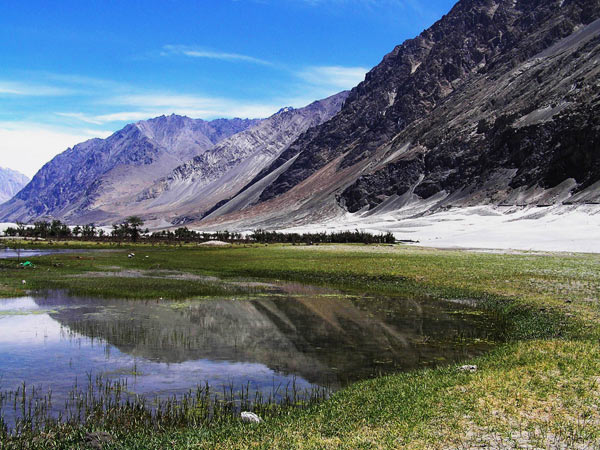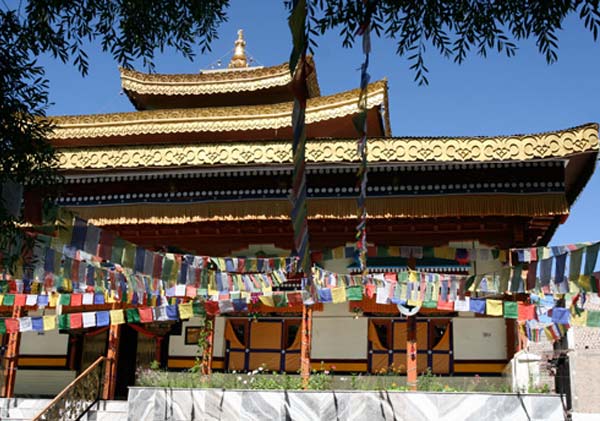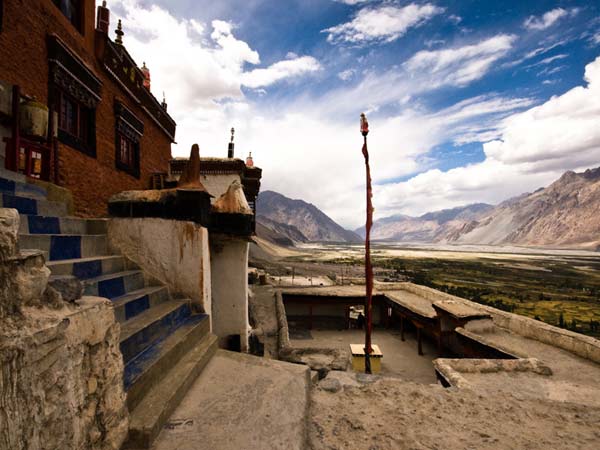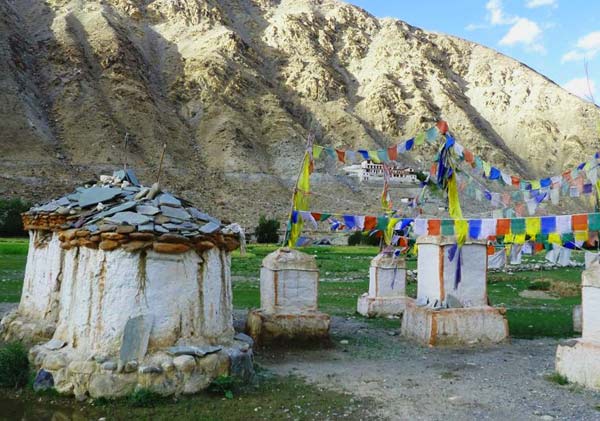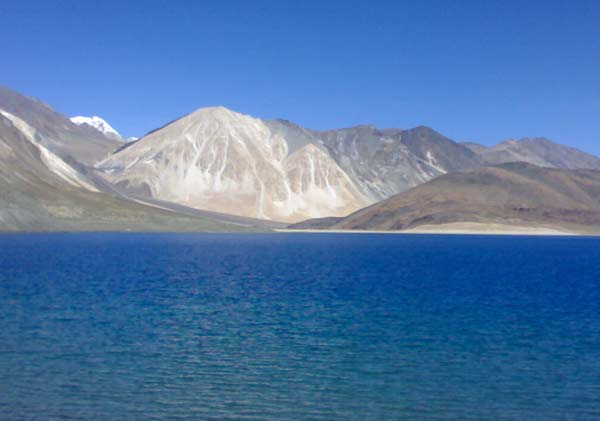Ladakh is a land like no other. Bounded by two of the world's mightiest mountain ranges, the Great Himalaya and the Karakoram, it lies athwart two other, the Ladakh range and the Zanskar range.
In geological terms, this is a young land, formed only a few million years ago by the buckling and folding of the earth's crust as the Indian sub-continent pushed with irresistible force against the immovable mass of Asia. Its basic contours, uplifted by these unimaginable tectonic movements, have been modified over the millennia by the opposite process of erosion, sculpted into the form we see today by wind and water.
Yes, water! Today, a high -altitude desert, sheltered from the rain-bearing clouds of the Indian monsoon by the barrier of the Great Himalaya, Ladakh was once covered by an extensive lake system, the vestiges of which still exist on its south -east plateau of Rupshu and Chushul - in drainage basins with evocative names like Tso-moriri, Tsokar, and grandest of all, Pangong-tso. Occasionally, some stray monsoon clouds do find their way over the Himalaya, and lately this seems to be happening with increasing frequency. But the main source of water remains the winter snowfall. Drass, Zanskar and the Suru Valley on the Himalaya's northern flank receive heavy snow in winter; this feeds the glaciers whose melt water, carried down by streams, irrigates the fields in summer. For the rest of the region, the snow on the peaks is virtually the only source of water. As the crops grow, the villagers pray not for rain, but for sun to melt the glaciers and liberate their water. Usually their prayers are answered, for the skies are clear and the sun shines for over 300 days in the year.
Ladakh lies at altitudes ranging from about 9,000 feet (2750m) at Kargil to 25,170 feet (7,672m) at Saser Kangri in the Karakoram. Thus summer temperatures rarely exceed about 27 degree celcius in the shade, while in winter they may plummet to minus 20 degree Celsius even in Leh. Surprisingly, though, the thin air makes the heat of the sun even more intense than at lower altitudes; it is said that only in Ladakh can a man sitting in the sun with his feet in the shade suffer from sunstroke and frostbite at the same time!
Day 1: Delhi - Leh
 On arrival at leh airport, you will be met by our representative at the airport and escort you to Hotel. Complete day for the acclimatization which is 3500 Mtrs above sea level. In the evening short walk around Leh bazaar Overnight at Hotel.
On arrival at leh airport, you will be met by our representative at the airport and escort you to Hotel. Complete day for the acclimatization which is 3500 Mtrs above sea level. In the evening short walk around Leh bazaar Overnight at Hotel.
Day 2: Leh
 Day excursion to the famous monasteries, it is interesting to visit early in the morning to enjoy the praying ceremony at Thiksey monastery. Continue drive to Hemis monastery which is one of the most famous monasteries of the Ladakh region. On the way back visit to Shey and Stok Palace. Overnight at Hotel.llll
Day excursion to the famous monasteries, it is interesting to visit early in the morning to enjoy the praying ceremony at Thiksey monastery. Continue drive to Hemis monastery which is one of the most famous monasteries of the Ladakh region. On the way back visit to Shey and Stok Palace. Overnight at Hotel.llll
Day 3: Leh
 After breakfast drive to Uleytokpo and on the way visit Likir monastery. HOT LUNCH in the camp. Afternoon visit Alchi Monastery. Overnight at Camp.
After breakfast drive to Uleytokpo and on the way visit Likir monastery. HOT LUNCH in the camp. Afternoon visit Alchi Monastery. Overnight at Camp.
ALCHI: Alchi Choskor is the only monastery in the Ladakh on flat ground, around 69 Kms west of Leh. Largest and most famous of all of the temples and built by the great translator Ringchem Zangpo. The temple was founded in 11th century which accounts for the Indian and particularly Kashmiri influences.
LIKIR: Located around 52 Kms from Leh, know as Klu-Kkhjil (water spirits) founded in the 14th century by Lama Dhwang Chosje a great champion of meditation. The site of the monastery was encircled by the bodies of two great spent spirits. Therefore, name became widely renowned as Lekir. In the 15th century the disciple of Khasdubje know a lhawang Lodos Sangphu caused the monastery to flourish. This monastery also belongs to Gaylukpa school. Every year from the 17th to 19th of the 12th month the Lekir festival is held.
Day 4: Leh - Uleytokpo
 After breakfast full day tour to Ridzong and Lamayuru monastery, in the evening return back to the camp. Overnight at camp. PACKED LUNCH
After breakfast full day tour to Ridzong and Lamayuru monastery, in the evening return back to the camp. Overnight at camp. PACKED LUNCH
LAMAYURU: The oldest and spectacularly set Lamayuru monastery is about 125 kms. West of Leh, founded in the 10th century . in 11th century the Mahasiddha Naropa came to this place. Then Rinchen Zangpo translator came and built many temples and stupas and then teaching of the Kadampa school came to flourish. Later Jamyang Namgyal offered it to Chosje Danma and Digung Kargyut school were introduced and named Yungdrung Therpalling. The Yundrung Kabgyad festival is held on the 28th and 29th days of the 2nd Tibetan month.
RIDZONG: Rizong is also known as Yuma Changchubling about 73 Kms from Leh and around 6 Kms from main road, founded about 138 years ago by the great Lama Tsultim Nima. Gompa belong to Gelukpa order. Dress and food provisions are provided for all member of the community by the Governing body of the monastery. The monastery is sited in a most solitary positions and there is a nunnery place called chulichan down the monastery. The work of spinning wool, milking, extracting oil for the temple lamps has to be performed by all the nuns.
Day 5: Uleytokpo
 After breakfast drive back to Leh. HOT LUNCH in the Hotel. Overnight at Hotel.
After breakfast drive back to Leh. HOT LUNCH in the Hotel. Overnight at Hotel.
Day 6: Uleytokpo – Ridzong – Lamayuru – Uleytokpo
 After early breakfast at the hotel departure to Nubra Valley with box lunch enroute visit Disket and Hundar monastery. On arrival check in at Camp. Accommodation in tents. Dinner and overnight at the camp.
After early breakfast at the hotel departure to Nubra Valley with box lunch enroute visit Disket and Hundar monastery. On arrival check in at Camp. Accommodation in tents. Dinner and overnight at the camp.
NUBRA: The Nubra valley lies in the north of leh and is accessible over the Khardungla pass 5600 Mtrs which is one of the highest motorable roads in the world. The Nubra valley has opened for Foreign Tourists in 1994 by the Govt. of India to expand tourists opportunities in ladakh region. The valley is on the trade route from leh to Khangar via Samsar and Karakoram passed. Apart from unparraled trekking opportunities. The valley have serval Buddhist Gompas Diskit Gompa is 350 years old and is situated on the highest point near the village in which there are about 120 Resident Buddhist Monks. The Nubra valley is also known for its double humped bacterian camels.
Day 7: Uleytokpo - Leh
 After breakfast departure to Panamik with lunch box. On the way back enough visiting also Sumur Gompa. Dinner and overnight in hotel.
After breakfast departure to Panamik with lunch box. On the way back enough visiting also Sumur Gompa. Dinner and overnight in hotel.
Day 8: Leh
 After breakfast at the camp, Departure to Leh with lunch box. On arrival check in at the hotel. Rest of the day free for shopping and independent activities. Dinner and overnight at the hotel.
After breakfast at the camp, Departure to Leh with lunch box. On arrival check in at the hotel. Rest of the day free for shopping and independent activities. Dinner and overnight at the hotel.
Day 9: Leh - Khardongla pass
 Leave in the morning and drive to Chumathang stop at Upshi for passport checking. From here the road turns towards left and reach Karu. Chumathang is famous for medical hot spring & people visit to this place for medical bath and visit Chumathang monastery. From here a a short drive upto Maha bridge the main checking point to enter to this new area. From here the road is rough. On the way visit Sumdah village and another 55 kms drive will take you to Tsomoriri. The Lake is breeding grounds for numerous species of birds. Chief amoung them are the bar headed goose, found in great numbers, crested grebe, the Brahmini duck (ruddy sheldrake) and the brown headed gull. The Lake is 8 Kms. Wide and 28 Kms long. Dinner and overnight in tents.
Leave in the morning and drive to Chumathang stop at Upshi for passport checking. From here the road turns towards left and reach Karu. Chumathang is famous for medical hot spring & people visit to this place for medical bath and visit Chumathang monastery. From here a a short drive upto Maha bridge the main checking point to enter to this new area. From here the road is rough. On the way visit Sumdah village and another 55 kms drive will take you to Tsomoriri. The Lake is breeding grounds for numerous species of birds. Chief amoung them are the bar headed goose, found in great numbers, crested grebe, the Brahmini duck (ruddy sheldrake) and the brown headed gull. The Lake is 8 Kms. Wide and 28 Kms long. Dinner and overnight in tents.
Day 10: Khardongla pass
 In the morning visit Korzok village with its houses and its gompa appearing like a mirage. The few barley fields at Korzok must be among the highest cultivation in the world. In the afternoon visit around the Lake . Dinner and overnight in tents.
In the morning visit Korzok village with its houses and its gompa appearing like a mirage. The few barley fields at Korzok must be among the highest cultivation in the world. In the afternoon visit around the Lake . Dinner and overnight in tents.
Day 11: Nubra (DISKIT & HUNDER)
 Drive to Mahe village and the road turns left from here towards Puga Valley . The village is an unforgettable scene of shooting fountain and white clouds hanging upon. This is Butan gas which Puga valley is famous. Continue drive to Tsokar via Polokongka pass (13500 ft.) and visit Tsokar (small Lake ) and one can also visit Thugke gomp. The place is famous for wild asses are generally seen here grazing and they seem moving in flocks. From here short drive and reach on National Highway route (Leh – Manali). Continue drive towards to Leh via Tanglangla pass (5350 Mtrs.) which is the second highest motorable pass in the world. Arrive Leh in the evening.
Drive to Mahe village and the road turns left from here towards Puga Valley . The village is an unforgettable scene of shooting fountain and white clouds hanging upon. This is Butan gas which Puga valley is famous. Continue drive to Tsokar via Polokongka pass (13500 ft.) and visit Tsokar (small Lake ) and one can also visit Thugke gomp. The place is famous for wild asses are generally seen here grazing and they seem moving in flocks. From here short drive and reach on National Highway route (Leh – Manali). Continue drive towards to Leh via Tanglangla pass (5350 Mtrs.) which is the second highest motorable pass in the world. Arrive Leh in the evening.
Day 12: NUBRA VALLEY
 Half day tour of Spituk and Phyang. Overnight at Hotel.
Half day tour of Spituk and Phyang. Overnight at Hotel.
SPITUK: Gompa is on the hill top near Indus, around 18 Kms from Leh. Which was founded in 11th century by Od-De the elder brother of Lha Lama Changchub-od, the Gompa named Spituk (exemplary) when Rinchen Zangpo translator came to that place and said that exemplary religious community would rise. Initially it belonged to the Kadampa school then during the life time of king Gragspa Bumide made it Gayluk Pa order. the Spituk festival held every year from 17th to 19th days of the 11th month
Phyang is 17 Kms west of Leh on the blue hill, belongs to Dingung order, founded in 15th century by Chosje Danma Kunja Dragpa in the time of king Jamjang Namgyal. Phyang monastery is also called Tashi Chosang, which mark the first established of the Dingung to teachings in Ladakh. The festival of Gang-Sgnon Tsedub are held every year from 17th to 19th of the 1st month.
Day 13: Nubra - Leh
 Transfer in time to the airport to connect onwards destination flight.
Transfer in time to the airport to connect onwards destination flight.
 On arrival at leh airport, you will be met by our representative at the airport and escort you to Hotel. Complete day for the acclimatization which is 3500 Mtrs above sea level. In the evening short walk around Leh bazaar Overnight at Hotel.
On arrival at leh airport, you will be met by our representative at the airport and escort you to Hotel. Complete day for the acclimatization which is 3500 Mtrs above sea level. In the evening short walk around Leh bazaar Overnight at Hotel. Day excursion to the famous monasteries, it is interesting to visit early in the morning to enjoy the praying ceremony at Thiksey monastery. Continue drive to Hemis monastery which is one of the most famous monasteries of the Ladakh region. On the way back visit to Shey and Stok Palace. Overnight at Hotel.llll
Day excursion to the famous monasteries, it is interesting to visit early in the morning to enjoy the praying ceremony at Thiksey monastery. Continue drive to Hemis monastery which is one of the most famous monasteries of the Ladakh region. On the way back visit to Shey and Stok Palace. Overnight at Hotel.llll After breakfast drive to Uleytokpo and on the way visit Likir monastery. HOT LUNCH in the camp. Afternoon visit Alchi Monastery. Overnight at Camp.
After breakfast drive to Uleytokpo and on the way visit Likir monastery. HOT LUNCH in the camp. Afternoon visit Alchi Monastery. Overnight at Camp. After breakfast full day tour to Ridzong and Lamayuru monastery, in the evening return back to the camp. Overnight at camp. PACKED LUNCH
After breakfast full day tour to Ridzong and Lamayuru monastery, in the evening return back to the camp. Overnight at camp. PACKED LUNCH After breakfast drive back to Leh. HOT LUNCH in the Hotel. Overnight at Hotel.
After breakfast drive back to Leh. HOT LUNCH in the Hotel. Overnight at Hotel. After early breakfast at the hotel departure to Nubra Valley with box lunch enroute visit Disket and Hundar monastery. On arrival check in at Camp. Accommodation in tents. Dinner and overnight at the camp.
After early breakfast at the hotel departure to Nubra Valley with box lunch enroute visit Disket and Hundar monastery. On arrival check in at Camp. Accommodation in tents. Dinner and overnight at the camp. After breakfast departure to Panamik with lunch box. On the way back enough visiting also Sumur Gompa. Dinner and overnight in hotel.
After breakfast departure to Panamik with lunch box. On the way back enough visiting also Sumur Gompa. Dinner and overnight in hotel. After breakfast at the camp, Departure to Leh with lunch box. On arrival check in at the hotel. Rest of the day free for shopping and independent activities. Dinner and overnight at the hotel.
After breakfast at the camp, Departure to Leh with lunch box. On arrival check in at the hotel. Rest of the day free for shopping and independent activities. Dinner and overnight at the hotel. Leave in the morning and drive to Chumathang stop at Upshi for passport checking. From here the road turns towards left and reach Karu. Chumathang is famous for medical hot spring & people visit to this place for medical bath and visit Chumathang monastery. From here a a short drive upto Maha bridge the main checking point to enter to this new area. From here the road is rough. On the way visit Sumdah village and another 55 kms drive will take you to Tsomoriri. The Lake is breeding grounds for numerous species of birds. Chief amoung them are the bar headed goose, found in great numbers, crested grebe, the Brahmini duck (ruddy sheldrake) and the brown headed gull. The Lake is 8 Kms. Wide and 28 Kms long. Dinner and overnight in tents.
Leave in the morning and drive to Chumathang stop at Upshi for passport checking. From here the road turns towards left and reach Karu. Chumathang is famous for medical hot spring & people visit to this place for medical bath and visit Chumathang monastery. From here a a short drive upto Maha bridge the main checking point to enter to this new area. From here the road is rough. On the way visit Sumdah village and another 55 kms drive will take you to Tsomoriri. The Lake is breeding grounds for numerous species of birds. Chief amoung them are the bar headed goose, found in great numbers, crested grebe, the Brahmini duck (ruddy sheldrake) and the brown headed gull. The Lake is 8 Kms. Wide and 28 Kms long. Dinner and overnight in tents. In the morning visit Korzok village with its houses and its gompa appearing like a mirage. The few barley fields at Korzok must be among the highest cultivation in the world. In the afternoon visit around the Lake . Dinner and overnight in tents.
In the morning visit Korzok village with its houses and its gompa appearing like a mirage. The few barley fields at Korzok must be among the highest cultivation in the world. In the afternoon visit around the Lake . Dinner and overnight in tents. Drive to Mahe village and the road turns left from here towards Puga Valley . The village is an unforgettable scene of shooting fountain and white clouds hanging upon. This is Butan gas which Puga valley is famous. Continue drive to Tsokar via Polokongka pass (13500 ft.) and visit Tsokar (small Lake ) and one can also visit Thugke gomp. The place is famous for wild asses are generally seen here grazing and they seem moving in flocks. From here short drive and reach on National Highway route (Leh – Manali). Continue drive towards to Leh via Tanglangla pass (5350 Mtrs.) which is the second highest motorable pass in the world. Arrive Leh in the evening.
Drive to Mahe village and the road turns left from here towards Puga Valley . The village is an unforgettable scene of shooting fountain and white clouds hanging upon. This is Butan gas which Puga valley is famous. Continue drive to Tsokar via Polokongka pass (13500 ft.) and visit Tsokar (small Lake ) and one can also visit Thugke gomp. The place is famous for wild asses are generally seen here grazing and they seem moving in flocks. From here short drive and reach on National Highway route (Leh – Manali). Continue drive towards to Leh via Tanglangla pass (5350 Mtrs.) which is the second highest motorable pass in the world. Arrive Leh in the evening. Half day tour of Spituk and Phyang. Overnight at Hotel.
Half day tour of Spituk and Phyang. Overnight at Hotel.
 Transfer in time to the airport to connect onwards destination flight.
Transfer in time to the airport to connect onwards destination flight.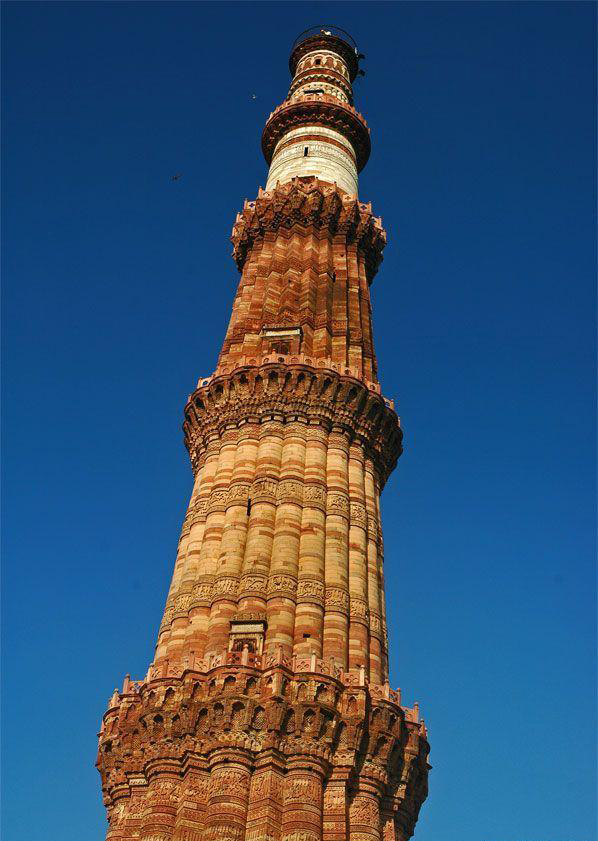
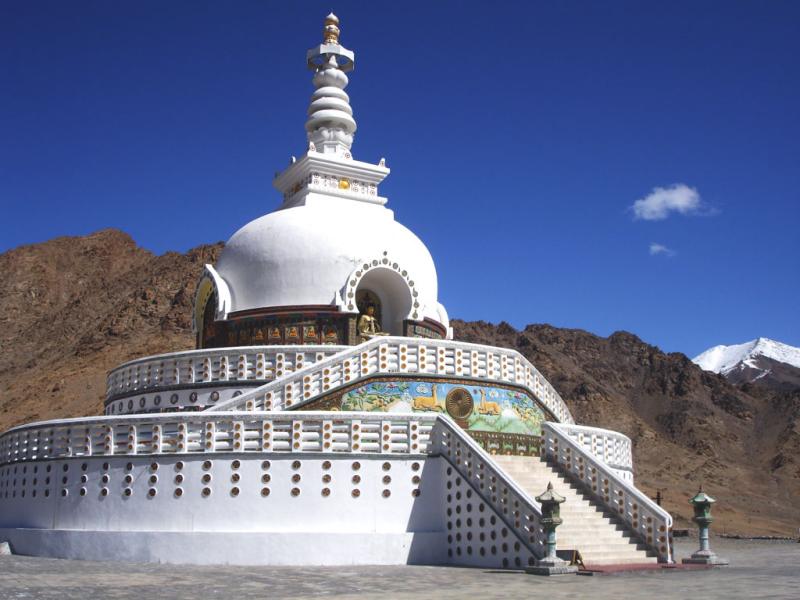
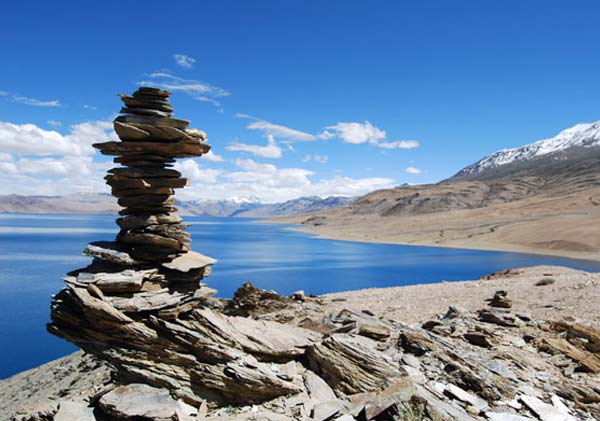
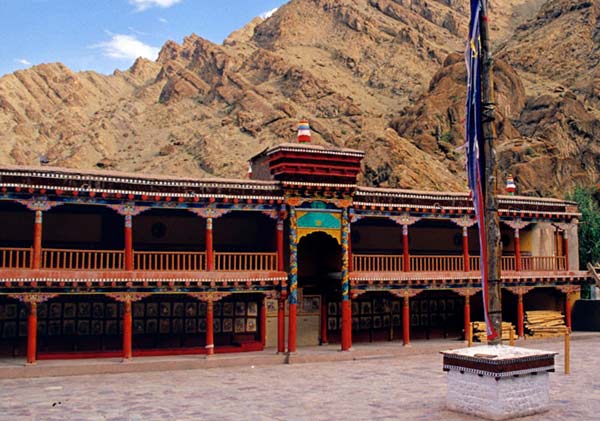
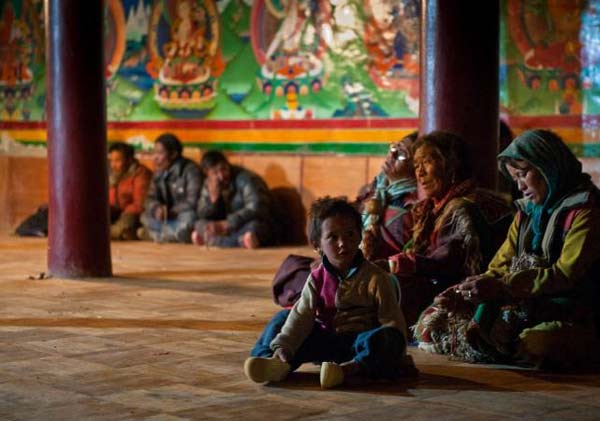
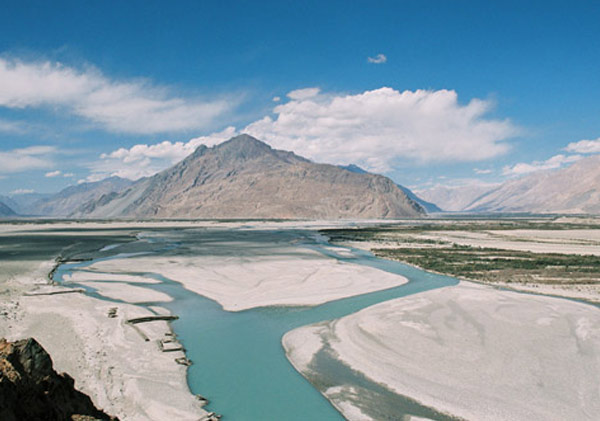
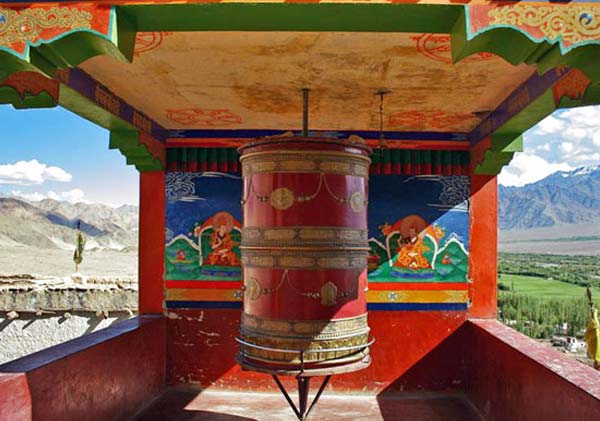
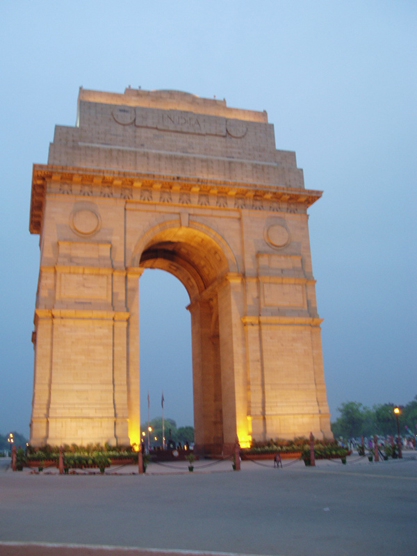
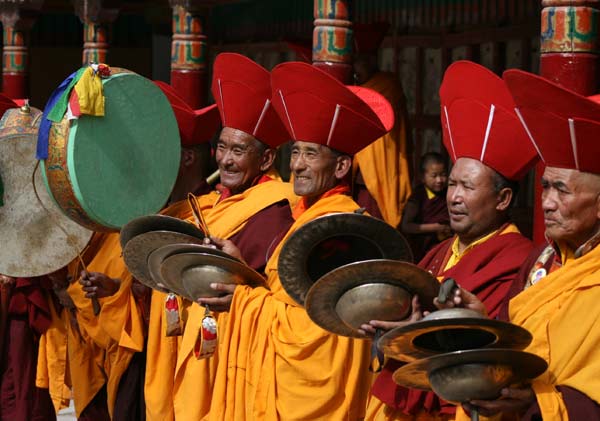
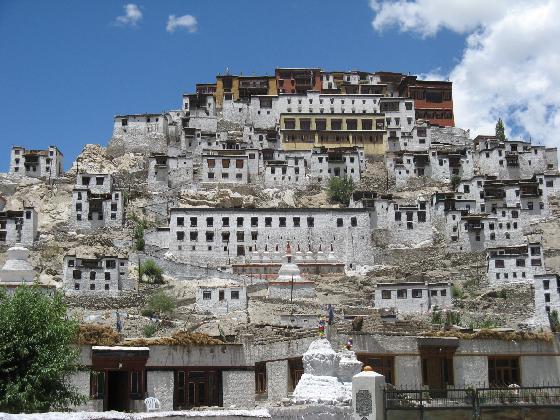
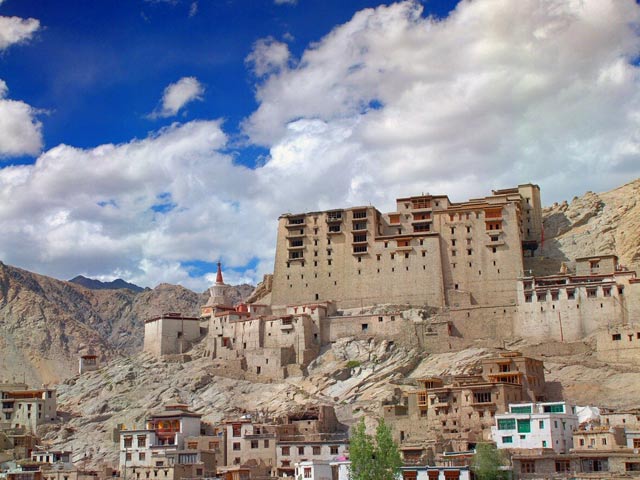
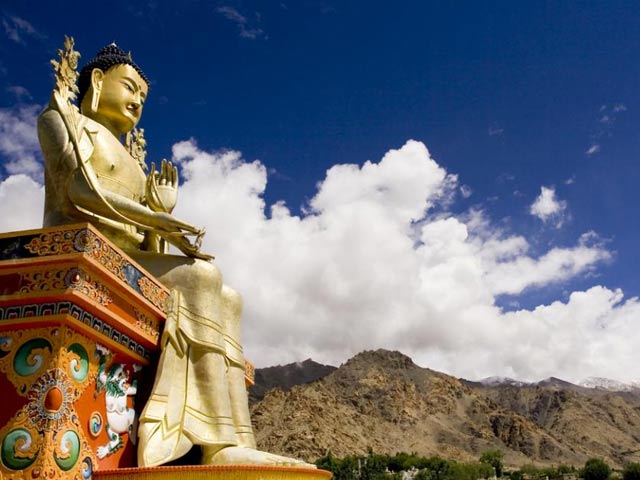
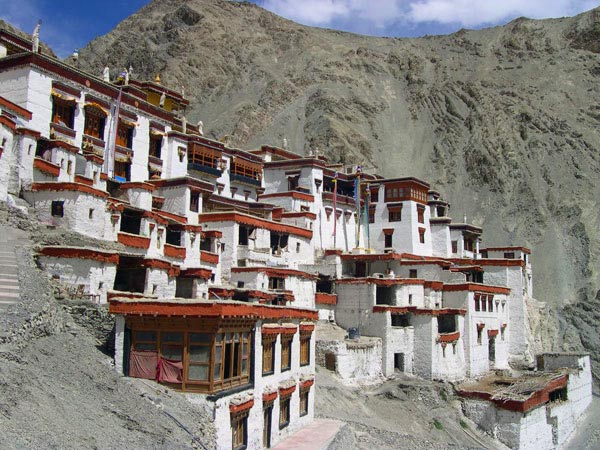
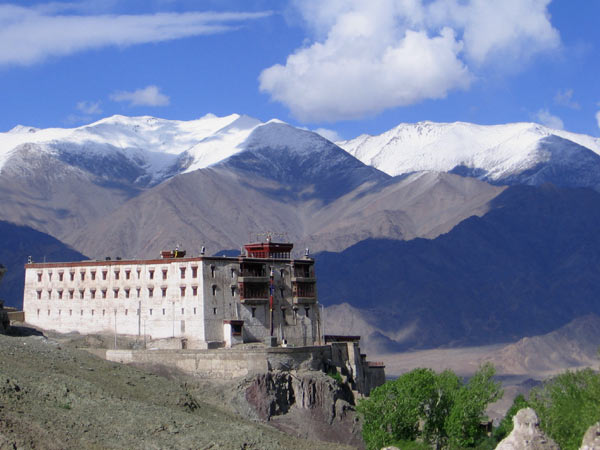
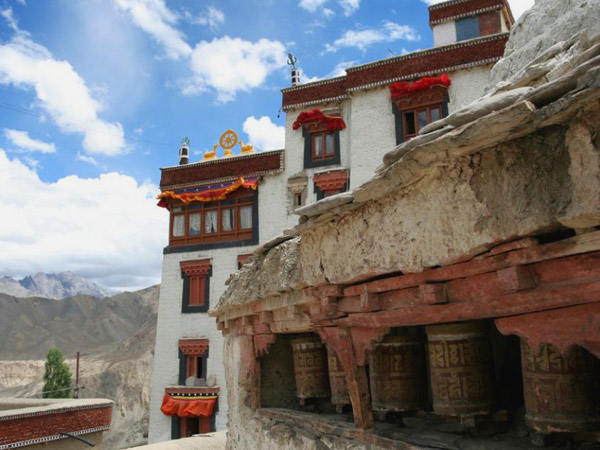
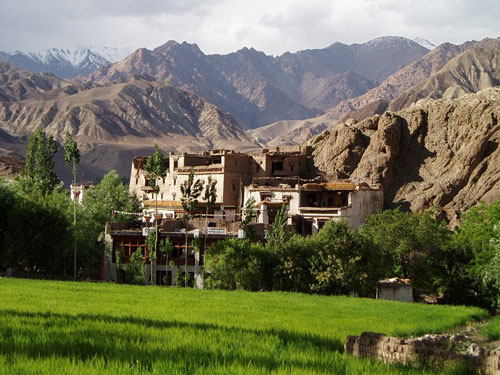
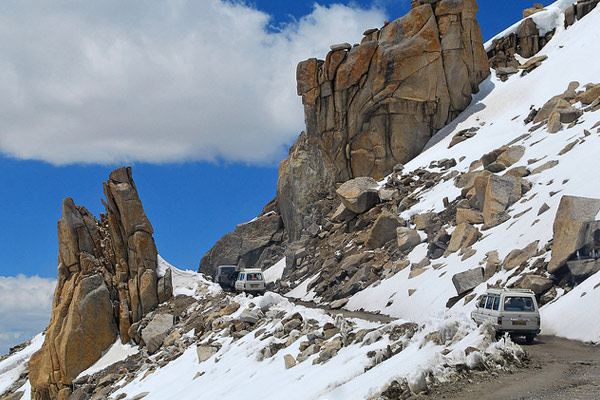
/Nubra (DISKIT & HUNDER)_76.jpg)
